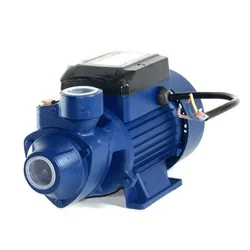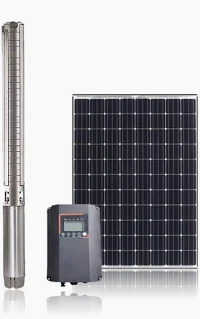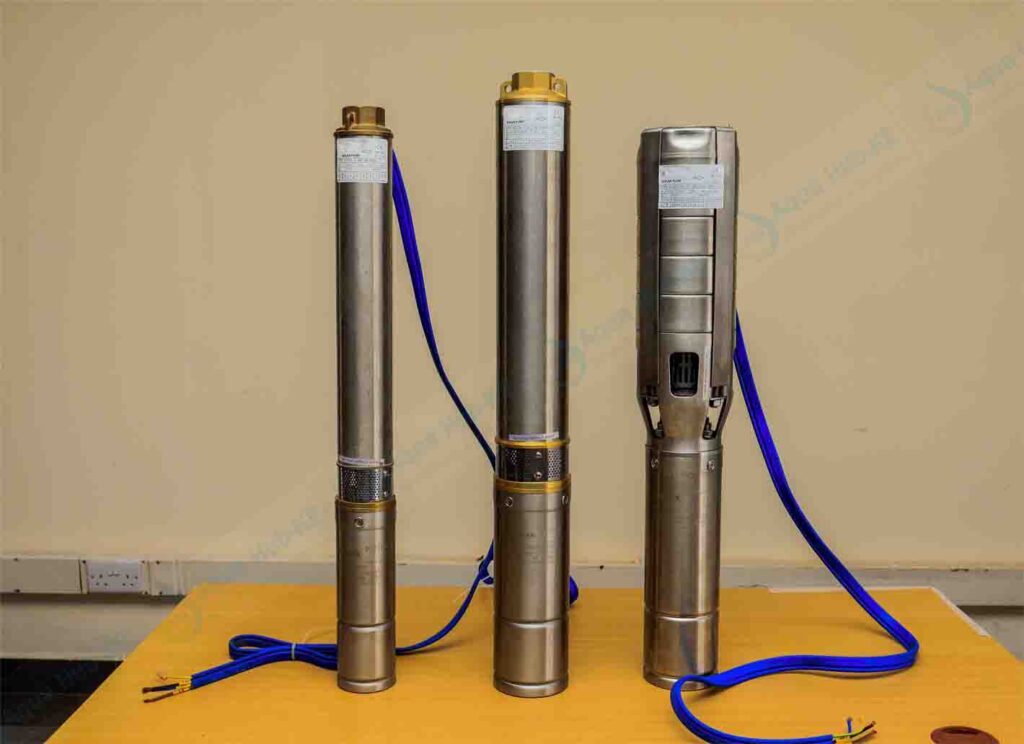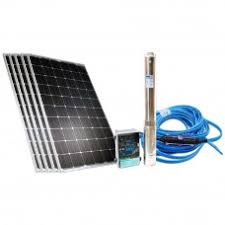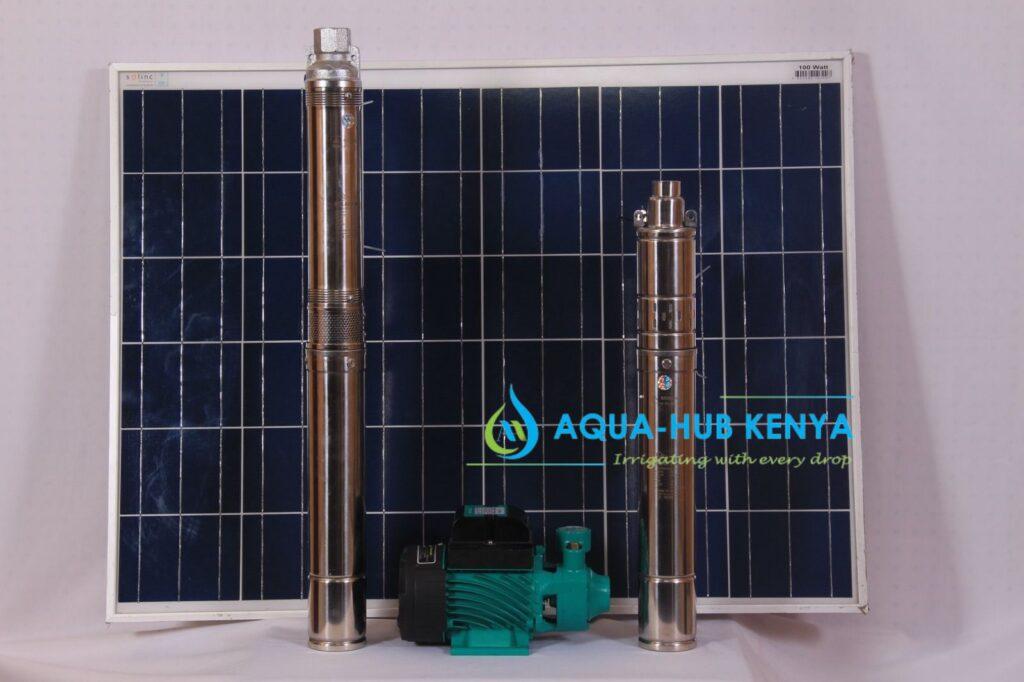Blog
Best Solar Pumps for Irrigation in Kenya
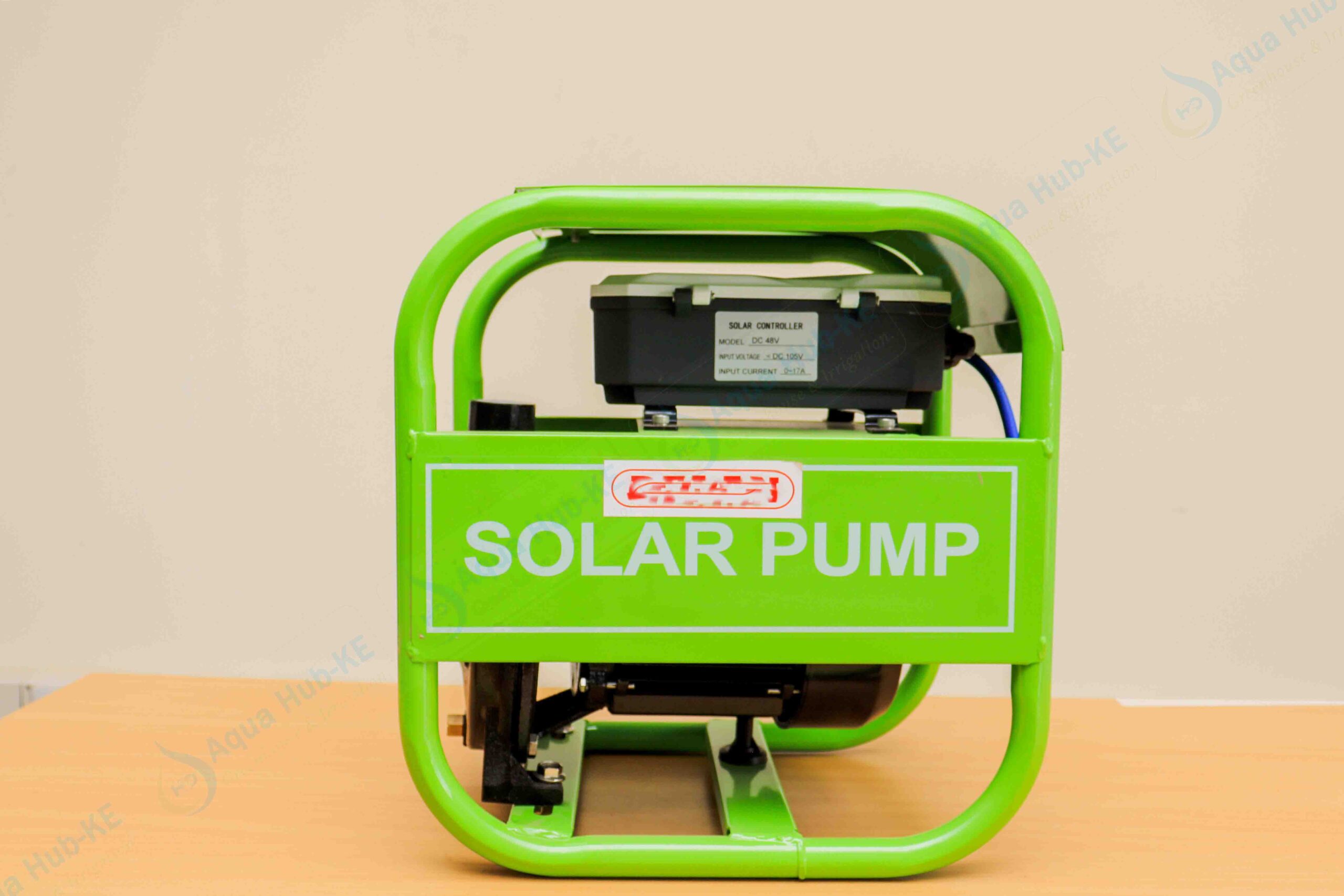
Solar pumps are common water supply devices for irrigation farming in Kenya because of their affordable cost to operate. In addition, calls for action on efforts to combat climate change and reduce carbon emissions has seen solar pumping technology becoming recommended.
In this article you will learn the best solar pumps for irrigation and how much they cost on purchase.
Best Solar Pumps for Irrigation in Kenya
We have a range of competitive solar pumps with reliable flow rates for irrigation and water supply in Kenya from KES 15,000 to KES 150,000. The reliable options of solar pumps for irrigation include:
- Delan Pumps
- Davis and Shirtliff – Sunflo Pump Models
- Pedrollo Pumps
- Grundfos
- Lorentz pumps
Why Solar Pumps are Best for Irrigation
Solar pumps harness the sun’s energy to draw and distribute water, eliminating fuel costs and reducing reliance on unreliable grid electricity. This makes them especially attractive for Kenya’s smallholder and commercial farmers facing erratic rainfall and rising fuel prices. With zero operating costs and minimal maintenance, solar irrigation pumps boost yields while safeguarding the environment.
3 Reasons why Solar Pumps are Recommended
- Zero running costs: unlike diesel or petrol pumps, they do not require fuel refills, resulting to saving on money often needed for fuel.
- Eco-friendly: they emit no carbon, helping combat climate change.
- Reliable: as long as the sun shines, water keeps flowing, even in remote areas.
How Solar Pumps for Irrigation work
Solar Pumps for irrigation in Kenya are often reliable in rural areas especially farms or ranches with no access to electricity.
These pumps operate fully on solar energy to draw and push water from source rivers, boreholes or dams to the point of use.
Requirements to Operate Solar Pumps for Irrigation
- Solar PV Module | panels – harness power from the sun and use it to generate electricity needed to power on the pump.
- Converter | solar inverter – are ideal for solar pumps that use AC current. They convert the DC current into AC current to avoid damage of the pump.
- Pump Controller – to regulate the power and monitor the operation of the pump.
- Electric Cable – transfer power from the PV module to the inverter or to the Pump.
- Solar Mounting grid – structures made of painted metal to hold the solar panels. Often designed as per the size and number of solar panels.
- HDPE Pipe and Connectors – for supplying water from source borehole to storage tanks or point of use.
Key Considerations Before Choosing a Solar Irrigation Pump
- Flow Rate: Volume of water pumped per hour (L/hr.). The flow rate corresponds to the size of the pump, meaning the larger the pump, the higher its flow or discharge rate.
- Motor: pump motor is a device that powers the pump. Pump motor capacity is measured in Kw/Hr. Motor size determines the power consumption and thus a core determinant of the right pump.
- Total Dynamic Head: Vertical lift plus friction losses (m).
- Source Depth: Suction capability for boreholes or shallow wells.
- Power Supply: DC vs. AC pump determines the need for inverter.
- Solar Panel Array: Number, wattage, and mounting structure should be considered when choosing a solar pump. This is done by sizing the pump to determine the power capacity and panels required.
- Controller & Protection: Dry-run protection and system monitoring.
Benefits of Solar Pumps for Irrigation in Kenya
- Sustainable Irrigation – solar energy is renewable; the pumps work so long as solar energy is available.
- Low Maintenance cost – because of solar power consumption, they have no moving parts, thus no maintenance needs.
- Zero Irrigation Cost – solar pumps require absolutely zero cost to power because of free solar energy usage.
- Scalability – You can add the number of solar panels incase you want to shift to a bigger pump with high motor power consumption.
- Safe for Environmental Use – Solar pumps do not emit carbon gases and are therefore ideal for preventing climate change.
- Durability – solar pumps last for a long time because they do not experience friction, wear or tear due to no moving parts. Only the system components such as cables, battery or controllers may require replacement but solar pumps can remain operational for up to 20 years.
Types of Solar Pumps for Irrigation
Submersible DC Solar Pumps
Submersible DC pumps run directly off solar panels without an inverter, offering high efficiency and simple installation. They sit underwater in boreholes, pushing water up to 100 m vertically. Common voltages are 24 V, 48 V, and 72 V.
- Ideal for deep wells and high-lift applications.
- Compact design minimizes footprint and eases installation.
- Example: Submersible Solar Pump delivers up to 720 L/hr at 100 m head and retails for around KES 35,000.
Submersible AC Solar Pumps
Submersible AC pumps use an inverter to convert DC from panels into AC, enabling standard three-phase motors for greater power. They excel where very high heads or flow rates are needed.
- Require a solar-to-AC inverter to protect the motor and ensure stable operation.
- Suitable for commercial-scale irrigation, pushing water hundreds of metres under pressure.
- Peak efficiency when paired with MPPT controllers to maximize power harvest.
Surface Solar Pumps
Surface pumps sit above ground and draw water from shallow sources such as rivers, ponds, shallow wells up to 6 m suction. They are versatile for drip or sprinkler systems on flat terrain.
- Easy access for maintenance and portable between sites.
- Provide moderate pressure (10–20 m head) over distances up to 30 m.
- Commonly used in sprinkler irrigation and small drip kits.
Portable Solar Booster Pumps
Small 12 V or 24 V DC booster pumps offer heads of 10–15 m and flows of 1–3 m³/hr, perfect for rooftop tanks, livestock troughs, or garden drip systems. They’re lightweight, plug-and-play units.
- Great for experimental plots or quickly extending irrigation to remote patches.
Common Uses of Solar Pumps in Kenya
Solar pumps are used for:
- Supplying water to farms
- Domestic water needs in homes or residential areas.
- Industrial water supply.
- High pressure water distribution in irrigation systems.

